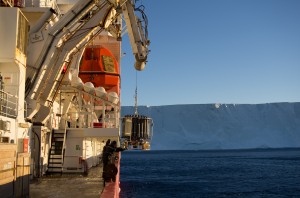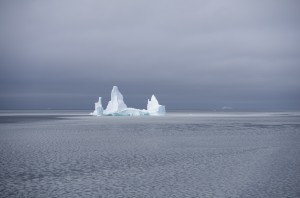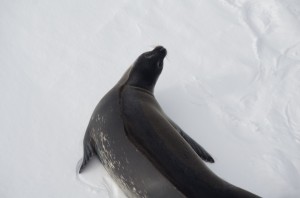iSTAR cruise update

The CTD (conductivity-temperature-depth profiler) being deployed near Pine Island Glacier during JR294/295. Photo: Povl Abrahamsen, BAS.
This year’s iSTAR research cruise has been hailed a success by project leaders. Twenty-four scientists and engineers set sail, from Punta Arenas in Chile, on the RRS James Clark Ross at the end of January. Less than a week later they arrived in Pine Island Bay to carry out the ocean related element of the iSTAR programme. Scientists believe most of the melting of the ice shelf to be driven from underneath, from the ocean.
The iSTAR A and B teams carried out tests at more than a hundred locations. A CTD (conductivity, temperature and depth) rosette was lowered to a range of depths to measure temperature and the amount of salt and oxygen in the water. The rosette is fitted with bottles to capture seawater samples at various depths in the water column.
The National Oceanography Centre’s autonomous submarine, Autosub3, was deployed into the cavity beneath the ice shelf. It was sent down close to the grounding line, where the ice meets the solid continent of Antarctica.
Experts from the Sea Mammal Research Unit at the University of St Andrews managed to tag fourteen seals. These tags, which have been glued to the fur on their heads, will help scientists monitor their foraging and migrating patterns, as well as measuring properties of the water in which they dive.

A pinnacle iceberg in the Amundsen Sea, with pancake ice in foreground. Photo: Povl Abrahamsen, BAS.
Principal investigator, Karen Heywood, from the University of East Anglia, said:
“We’re delighted by the quantity and quality of the observations and data sets that we’ve been able to obtain. We’ve been helped by the unusually small amounts of sea ice in Pine Island Bay and this meant that we could get to areas that are very rarely accessible. It will take many months of careful study to understand the processes fully.”

